From inside.
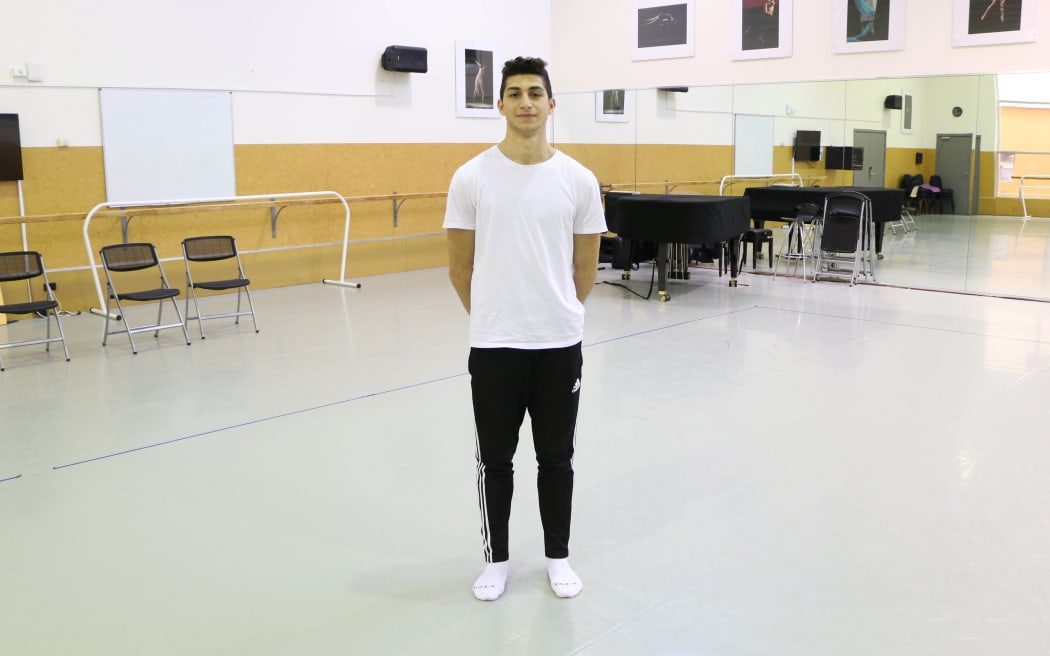
Mali Comlekci. Photo: The Wireless/Max Towle
About 20 young dancers mill around before rehearsal.
They leave their shoes outside the studio, drop their backpacks and do their stretches. They chat and joke, before easing into practice.
They’re mostly wearing sweatpants and singlets. They are different heights and body shapes, though all are incredibly fit.
As rehearsal begins, they huddle together and with their hands collectively form an insect-like shape. They coil in unison.
Occasionally, someone peels aways from the group and tries out a move in front of a mirror that spans the length of a wall.
A couple of dancers work separately to the group, going over a duet sequence. Intense music plays over and over and blares and echoes in the wide, clean space.
The duetters glide into each other and intertwine their bodies. They leap and contort in unimaginable ways. Their bare feet slide and pound the studio floor. Mistakes are made and laughed off.
“You just have to figure out how to get into that final position,” choreographer Sarah Foster-Sproull tells them.
After 20 minutes she brings the dancers together to rehearse a different section: “The energy and aggression is perfect, we just need to figure out some minor details.”
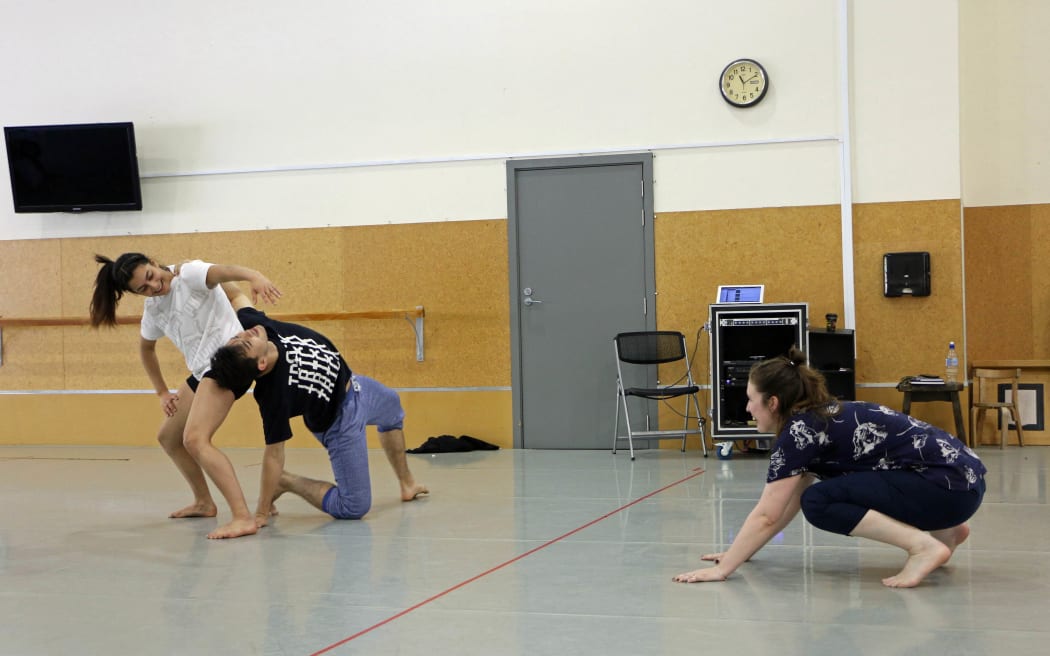
Sarah Foster-Sproull (right) guides Kent Giebel-Date and Kia Jewell. Photo: The Wireless/Max Towle
In about two weeks, this group of late-teens/early twenty-somethings will graduate from the New Zealand School of Dance.
They are contemporary dancers, as opposed to the classical ballet dancers who rehearse in a nearby studio. Contemporary dance is more modern and encompasses different styles like hip-hop, lyrical and jazz.
Most have known each other and danced together almost every day for three years.
They are rehearsing a performance named “Forgotten Things”, which will feature in the school’s 50th anniversary Graduation Season show in a week in Wellington.
One of the duetters is Kent Giebel-Date, 21, who is finishing his third year.
Kent was born in the US and grew up in Japan and Taiwan. He began dancing in his mid-teens - an unusually late start.
He says if you had told his 14-year-old self he would one day graduate from an international school of dance, he wouldn’t have believed it.
“I think my parents would have prefered if I’d done something more academic, or financially secure, as they would like to think. I think it was a bit of a surprise for them, and for myself too,” he says.
“But I honestly don’t think I would have been able to persist with studies at a regular university - I just don’t get the same level of engagement as I do with dance.”
He says his parents have softened over the past three years: “My mum is flying from Japan for the grad show - they now see this is something I take very seriously.”
The rehearsal shifts to a sequence where Kent must throw himself backwards into a small group.
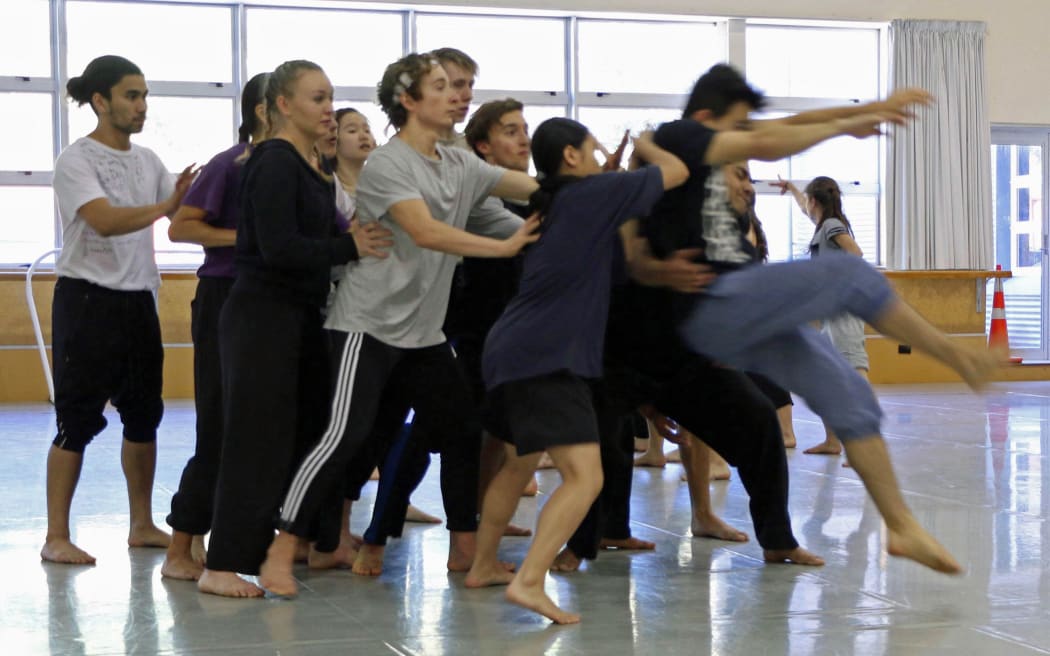
Kent Giebel-Date throws himself around during rehearsal. Photo: The Wireless/Max Towle
Sarah tells him to “really go for it”.
“How much do you trust them?” she asks.
Kent mutters a response with a wry smile and the group erupts in laughter.
“Wow, that’s the end of a lot of friendships.”
For Kent, dancing can be a cathartic and transcendent experience he compares to “the eyes rolling into the back of the head scene in ‘The Exorcist’”.
“I started to love it because of the movement - it was exhilarating moving my body in unusual ways,” he says.
“Functionally, it’s redundant, but aesthetically it’s very pleasing. It’s different for every person, but for me dancing is quite meditative. I can lose myself completely.”
Near the back of the group preparing to absorb Kent’s weight is Holly Brogan, who is a few hours away from turning 20.
Holly, who is also finishing her third year, left high school a year early to come to the school.
As a child, she dreamed of being a ballerina.
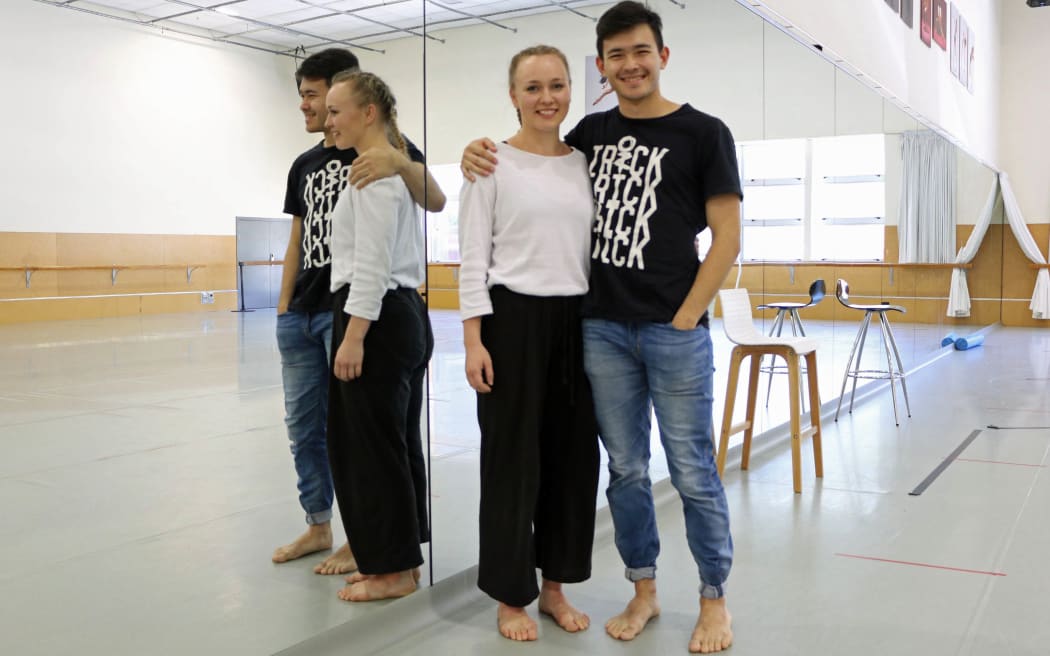
Holly Brogan and Kent Giebel-Date. Photo: The Wireless/Max Towle
“I didn’t really enjoy school. I would be doing all the arty subjects anyway and wasn’t much of an English or Mathematics student,” she says.
Holly was classically trained in ballet classes from four to 13, when she was told she would never cut it as a ballerina. The reason: “I didn’t have the right body shape.”
She was devastated: “It wasn’t just one person who told me that, there were a few second opinions.”
Little Holly recovered quickly, switching to contemporary dance.
She says her love for dancing persists because she was never pushed into it by her parents: “I’ve got friends who were forced to do it because of their natural talent, even if they didn’t enjoy it.”
“That’s why I still love it - it has always been my choice.”
Holly loves to perform.
“It’s nerve-wracking and scary and sometimes you want to vomit, but the attention from hundreds or thousands of people gives you such a rush.”
Her dancing experience is different to Kent’s.
“I’m not lost in the moment, so much. I give a lot of attention to what’s going on around me.”
She admits she often struggles with timing, so gives extra focus to being in the right place at the right time.
“But then whenever I’m in the studio and I’m dancing alone, that’s when I’m dancing for me and not for the audience.”
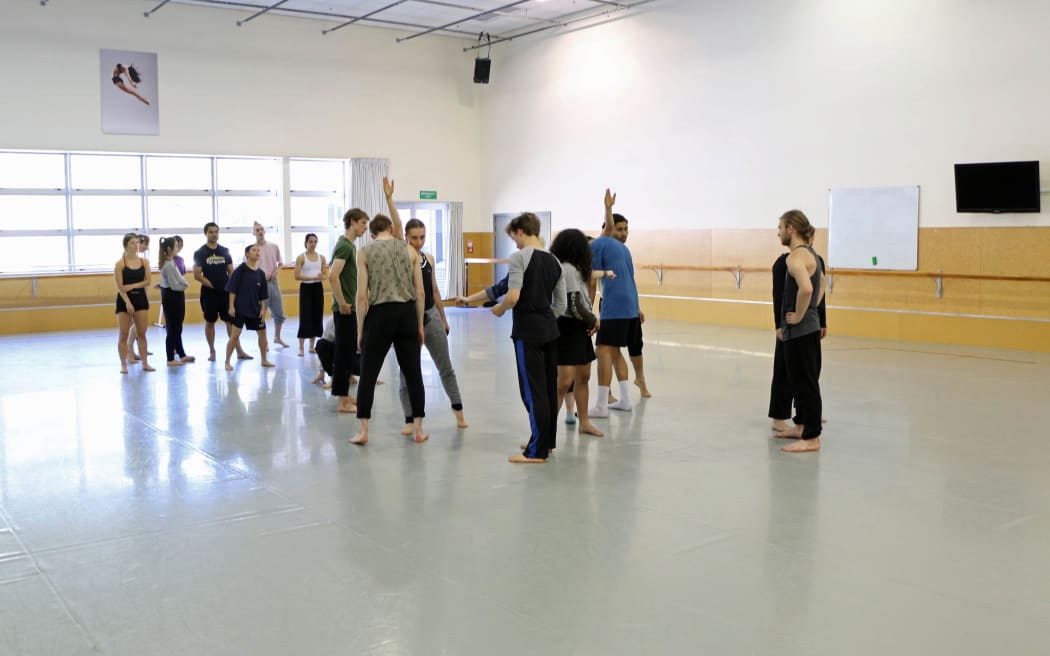
The group rehearse. Photo: The Wireless/Max Towle
Back at the rehearsal, Sarah is again marshalling the group to go over another section.
“We’re about to do what you’ve trained three years for - the slow walk,” she jokes.
The simplest motions are performed again and again. Sarah hits pause and play countless times on a creaking stereo.
She too was a student at the school, graduating in 1997. She has danced on different continents and with top names. She has also become one of the country’s best choreographers and recently won a $110,000 fellowship from Creative New Zealand.
For her, dancing is about exploring abstract concepts and bringing them to life. “Forgotten Things” is about metamorphosis. It’s a series of short scenes where dancers mesh together then break apart, resembling cell division.
“For me, dancing is the ability to bring to life a vision that exists only in my mind and bringing those ideas into conflict and contact with other people and their ideas and bodily histories,” she says.
Sarah started ballet at seven when her doctor suggested dancing could improve her knock knees and pigeon toes.
When she graduated, she says jobs in New Zealand were few and far between: “It really was the dark ages.”
She says it’s still difficult to make a living in New Zealand, but there are a few dance companies in Auckland and one in Wellington, and jobs in other realms such as writing, teaching and administration.
For the motivated, she says the career is “absolutely worth it” and there’s space in the industry for every student.
“Everyone will have to make sacrifices - it may be intermittent employment and they may not be paid well - but if they’re willing to accept a number of challenging circumstances, the career is absolutely there.”
When some think of dance, they picture the fierce competitiveness and back-stabbing in films like “Black Swan”, but there’s little evidence of that in rehearsal.
The objective is that everyone has the opportunity to be seen.
Kent Giebel-Date says those moments are rare.
“There are times when it’s like, ‘why didn’t I get that part?’ or ‘why didn’t I get that job?’, but that’s just how it goes. You’ve got to roll with the punches and take it with grace.”
In “Forgotten Things”, Sarah has made sure every dancer has their moment front of stage.
“Because I’ve graduated from a dance institution, I know how important it is for each person's family and friends to watch them in a moment doing the thing they’ve trained two or three years for,” she says.
“Alongside the work looking shit-hot, the objective is that everyone has the opportunity to be seen.”
Competitiveness depends on personalities. Sarah says she tries to create an environment where there’s no need for competitiveness.
“We’re not just training people to do sweet dance moves. We’re training global citizens.”
At the end of the rehearsal, the dancers go over the performance in full. What wasn’t evident watching individual sections being rehearsed to the point of monotony becomes clear.
Using their entire bodies, the dancers tell a story that’s more than just sweet dance moves.
Afterwards, the entire school comes together in the studio for “assembly”.
Down the corridor, Mali Comlekci has just finished his own rehearsal.
Mali is a ballet dancer and perfectly fits the mould. He is tall and slender yet remarkably strong.
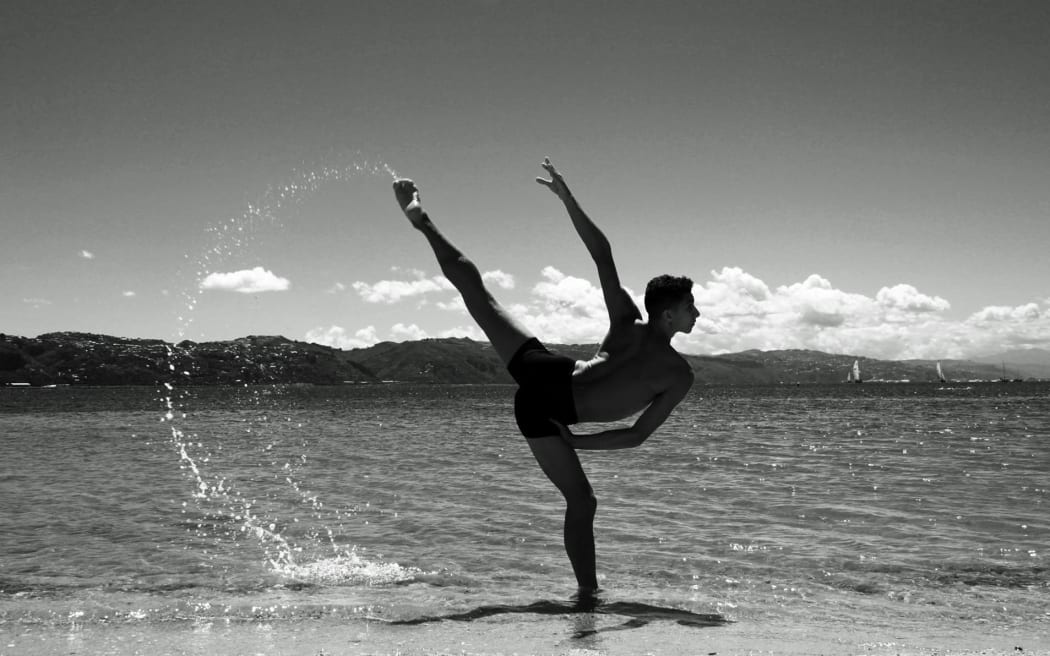
Mali Comlekci. Photo: Lydia Tan
He moved from Sydney to study at the school two years ago and will also graduate in a few weeks.
“It’s starting to hit me how fast my time here has gone. A part of me doesn’t want to leave, but I’m also excited to see what the world’s got for me.”
Mali started formal dance training at 10. For him, dancing is about expression.
“I think what I love most is when I’m in the moment, it just feels like it’s coming from inside and the heart,” he says.
“Even in the studio when I’m practicing, I tend to forget where I am. As soon as I stop I’m back there, but while the music is playing I just move and see what happens.
“And there are days when I do hate it, because dancing can sometimes be quite technical and frustrating if I just can’t do something specific right or if it’s not working that day, but it’s the freedom that excites me.”
A few of the graduating students already have offers lined up, while others, for now, just have dreams.
Both Mali and Holly dream of Europe.
On December 19, Holly will move to London to pursue a dance career. There’s no job at the other end, she says, but auditions start in January.
“I have a plan,” she slyly says. “Every time I think about it I get excited.”
Earlier this year, Holly spent two months on secondment travelling and dancing in Europe.
“When I got back, I’m not going to lie, I really didn’t want to be here,” she says.
“And it wasn’t the school and it wasn’t the people, I had just experienced my love for dance on the other side of the world and was suddenly back at an institution and studying on a 9-to-5 schedule.
“But I came to realise I only had a few months left with people I’ve grown to love.”
The NZ School of Dance offers a dance programme called Tū Move for young Māori and Pacific men aged between 14 and 18. The free workshops feature training in street and other contemporary dance styles. More info can be found here.
The school’s graduation show will be performed three times on November 24 and 25 at Wellington’s St. James Theatre.


